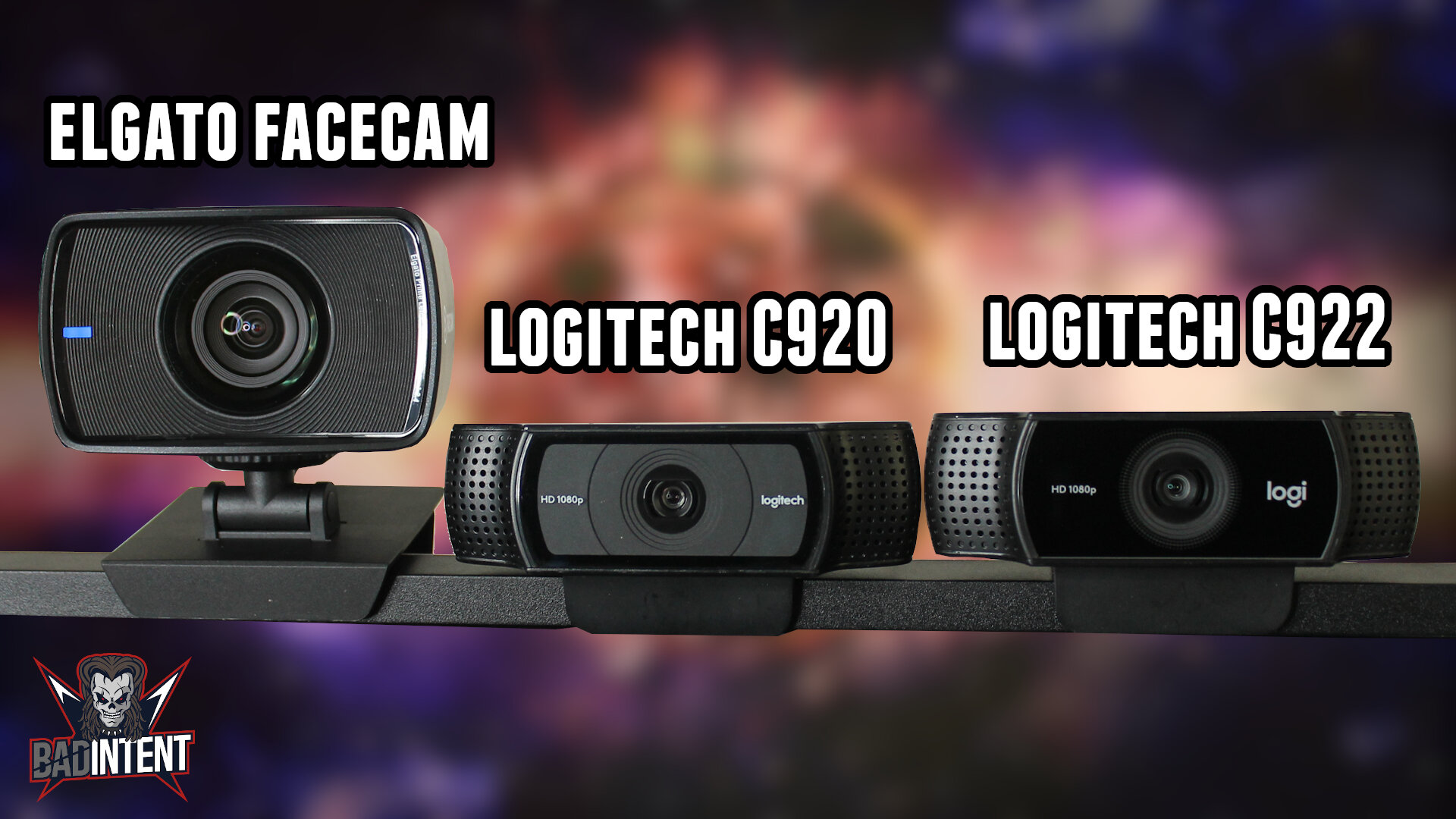Elgato Facecam vs Logitech C920 and C922
Amazon links in this article are affiliate links. As an Amazon associate I earn from qualifying purchases.
Specifications
Build Quality
Image Quality
Verdict
Specifications
Elgato Facecam
Maximum resolution and frame rate: 1080p, 60 FPS.
Focus: Fixed.
Video Format: UYVY.
Field of View: 82 degrees.
Connection Type: USB 3.0 (Type-C goes in webcam, Type-A goes in computer)
No microphone is built into this device.
I bought my Elgato Facecam for its launch price of $200. Elgato’s Facecam page is linked.
Logitech C920
Maximum resolution and frame rate: 1080p, 30 FPS.
Focus: Auto or manual.
Field of view: 78 degrees.
Video Format: MJPEG.
Connection Type: USB 2.0 (Type-A, non-detachable)
I bought my C920 on sale for $50. To see its current pricing, I’ve linked its Amazon page.
Logitech C922
Maximum resolution and frame rate: 1080p, 30 FPS. Or 720p 60 FPS.
Focus: Auto or manual.
Field of View: 78 degrees.
Video Format: MJPEG.
Connection Type: USB 2.0 (Type-A, non-detachable)
I bought my C922 for around $120. To see its current pricing, I’ve linked its Amazon page.
Build Quality
Left to right: Elgato Facecam, Logitech C920, Logitech C922.
All three builds are plastic and they each have 1/4th inch tripod threading. The Elgato Facecam has the best build here with a long wire of about 82 inches and excellent adjustability in terms of rotation and tilting up and down. It also comes with a privacy cover.
The C920 and C922 are pretty much identical devices in terms of specs and build. The only difference is the C922 can do 720p 60 FPS. The wire length of these are 60 inches and non-detachable. They can be slightly tilted up and down but not left or right.
Image Quality
Out the box Performance
Starting with daylight only and fully automatic settings. While the C920 and C922 have slight overexposure with the bright spot on my wall from the sun, I prefer their overall brightness and colors to the Elgato Facecam. So they win out the box.
Sharpness
Moving onto how these webcams should really be used - with optimized lighting and settings. Sharpness is a win for the Elgato Facecam, but the detail is not as clean as some other premium webcams like the Logitech Brio.
There can also be a lot of grain if you have the ISO too high. This can be mitigated with the noise reduction filter available in Elgato Camera Hub, but it makes the image too soft.
The only thing that separates the C922 from the C920 is its ability to do 60 FPS at 720p. The image loses a ton of detail and looks quite pixelated however, so I do not recommend it.
Color Accuracy
Facecam with auto white balance.
Attempting to get a good shot with Facecam’s manual white balance.
The C920 and C922 have washed out, undersaturated colors and they also make skin tones a bit more red than they should be. Other than that, they’re unoffensive.
The Elgato Facecam’s colors are a bit of a wreck. The first image above is with auto white balance on and everything is too yellow and red. The second image is with manual white balance which can never get close to automatic. This one either is too blue or green, and there’s no way to make the wall an acceptable white.
Color accuracy isn’t great on the C920 and C922 but they’re better than the Facecam’s.
Exposure and Dynamic Range
The C920 and C922 have a tendency to overexpose whites from sunlight reflection, but their overall dynamic range is decent. In motion, the Facecam is much smoother without needing distracting motion blur due to its 60 FPS. Technically, that’s also true with the C922’s 720/60 but it looks horrendous at that setting.
I give the win to the Facecam because of its superior contrast. Dark colors like my hair are too black on the Logitech devices. On the Facecam you can really see the brown. By decreasing the contrast to its minimum value on the Facecam you can also brighten up the entire image without getting as much overexposure from light areas.
Focus
The C920 and C922 have about average autofocus for webcams. It’s decently fast - sometimes. I prefer manual focus, but AF can be helpful for putting text and objects close to the device to demonstrate.
This is not possible with the Elgato Facecam as it’s a fixed focus lens. Objects too close or too far away from the device will just never be in focus.
Image Quality Summary
The Elgato Facecam has better sharpness and dynamic range with optimized lighting and settings than the C920 and C922. However, its colors are way off, it’s still not really that detailed, and it has no manual focus capability. It’s more of a sidegrade compared to the Logitech C920 than a legitimate upgrade.
Verdict
In order: Facecam, C920, C922.
For those on a budget, I recommend the Logitech C920 despite how old it is. It still gets the job done without burning through your wallet. I do not recommend the C922 unless you happen to find it for as cheap or cheaper than the C920 because the 720p 60 FPS on it just looks bad.
For those wanting the best of the best webcam, keep looking. The Elgato Facecam is not it. At its high price point, you can find something with far better sharpness and field of view like the Logitech Brio (my favorite webcam) or superior colors like the Razer Kiyo Pro.
Product Listings
Logitech C920: https://amzn.to/3cTUoCX
Logitech C922: https://amzn.to/3vW7mZw
Elgato Facecam: https://amzn.to/2Vss8Ta

